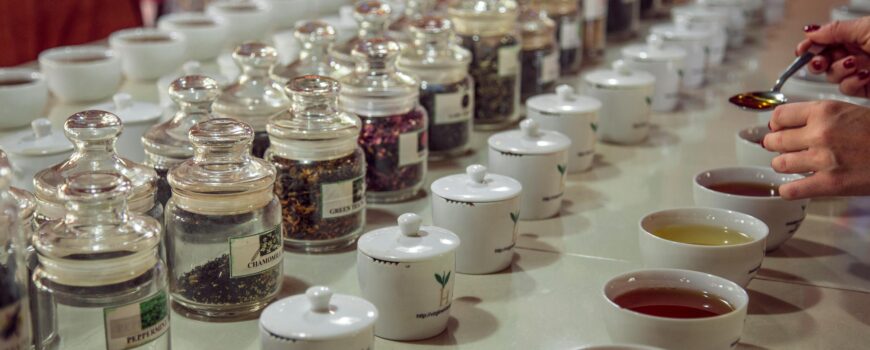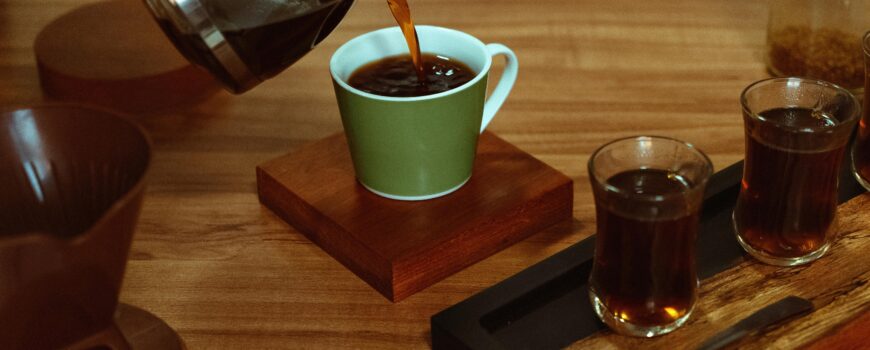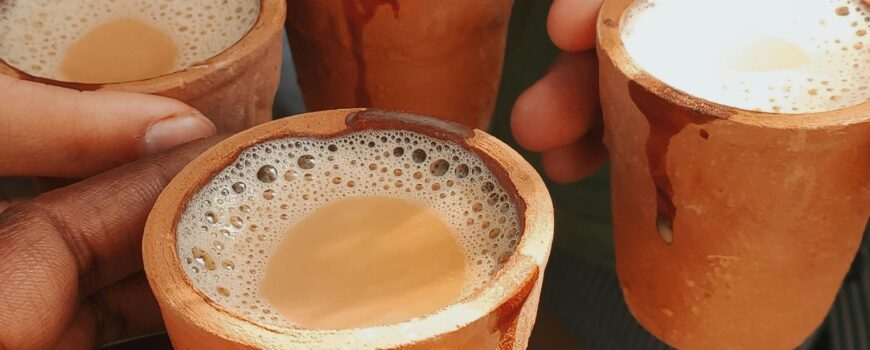Specialty tea tasting is an art that involves a careful and systematic approach to evaluating high-quality, unique teas. This guide will help you conduct a specialty tea tasting, focusing on the nuances and distinctive characteristics of these teas.
Preparing for the Tasting
1. Gather Your Supplies:
- Specialty Tea Samples: Select a variety of specialty teas such as single-origin, rare, or high-grade teas.
- Tasting Cups: Small white porcelain cups for observing the tea’s color and clarity.
- Teapots or Infusers: Clean, neutral-flavored teapots or infusers to brew the teas.
- Kettle: Access to fresh, clean water for brewing.
- Tasting Spoons: Silver or stainless steel spoons for sampling the tea.
- Note-taking Materials: A notebook or tasting sheets to record your observations.
2. Set Up the Tasting Area:
- Clean Environment: Ensure your tasting area is clean and free from strong odors that might affect your perception of the tea.
- Good Lighting: Proper lighting helps you observe the tea leaves and liquor accurately.
The Tasting Process
1. Observe the Dry Leaves:
- Appearance: Examine the color, shape, and size of the dry leaves. Specialty teas often have meticulously crafted leaves that are visually distinct.
- Aroma: Smell the dry leaves to capture their initial aromas. Note any unique scents such as floral, fruity, vegetal, or earthy tones.
2. Brew the Tea:
- Water Temperature: Use the correct water temperature for the specific type of tea:
- Green Tea: 70-80°C (158-176°F)
- White Tea: 75-85°C (167-185°F)
- Oolong Tea: 80-90°C (176-194°F)
- Black Tea: 90-100°C (194-212°F)
- Pu-erh Tea: 95-100°C (203-212°F)
- Quantity: Use about 2 grams of tea per 200 ml of water, but adjust based on specific tea recommendations.
- Brewing Time: Steep the tea for the recommended time, typically 2-5 minutes, depending on the type and instructions provided with the tea.
3. Observe the Liquor:
- Color: The brewed tea should have a clear, bright color. The exact hue will depend on the type of tea.
- Clarity: The tea liquor should be clear without any cloudiness.
4. Smell the Aroma:
- Aromatics: Inhale deeply to capture the tea’s aroma. Note the complexity and layers of scent, which can range from floral and fruity to nutty and smoky.
5. Taste the Tea:
- First Sip: Take a small sip to get an initial impression.
- Swirl and Slurp: Swirl the tea around in your mouth and slurp it to enhance the flavor experience. This helps to aerate the tea and release more flavor.
- Evaluate: Note the tea’s sweetness, bitterness, umami, astringency, and any other unique flavors. Specialty teas should have a balanced, complex taste profile with multiple layers of flavor.
6. Note the Aftertaste:
- Finish: Pay attention to the aftertaste. Good specialty tea should leave a pleasant, lingering flavor that evolves over time.
Recording Your Observations
1. Use a Tasting Sheet:
- Attributes: Record observations for appearance, aroma, flavor, mouthfeel, and aftertaste.
- Scoring: Use a numerical scale to rate each attribute for a more structured evaluation.
2. Compare Notes:
- Consistency: Compare your notes with other tasters if possible to ensure consistency and objectivity.
- Preferences: Identify which teas you prefer and why, noting specific characteristics that stood out.
Tips for an Effective Specialty Tea Tasting
- Use Fresh Water: Always use fresh, filtered water to ensure the purest taste.
- Clean Equipment: Ensure all teapots, cups, and spoons are clean and free from any previous tea residues.
- Neutral Environment: Conduct the tasting in a neutral environment free from strong odors or flavors that could interfere with your tasting.
- Pace Yourself: Give yourself time to fully experience each tea before moving on to the next one.
Conducting the Tasting Session
1. Introduction:
- Briefing: Explain the purpose of the tasting and the types of specialty teas being sampled.
- Instructions: Provide clear instructions on how the tasting will proceed.
2. Tasting Sequence:
- Order: Start with lighter teas (like white or green) and progress to darker teas (like oolong, black, and pu-erh) to avoid palate fatigue.
- Discussion: Encourage discussion and sharing of observations after each tea is tasted.
3. Interactive Session:
- Q&A: Allow participants to ask questions and discuss their experiences.
- Feedback: Collect feedback on the teas tasted and the overall tasting experience.
Conclusion
Specialty tea tasting is a rewarding experience that deepens your appreciation for high-quality teas. By following this structured guide, you can conduct an effective and enjoyable specialty tea tasting session, whether for personal enrichment or professional development. The key is to be attentive to the details and open to the unique characteristics each tea has to offer.
Zircon Tea Company
Contact No is +91-9499347308
Email is info@irconshop.in
Our You Tube Channel Is Zircon Tea Company




